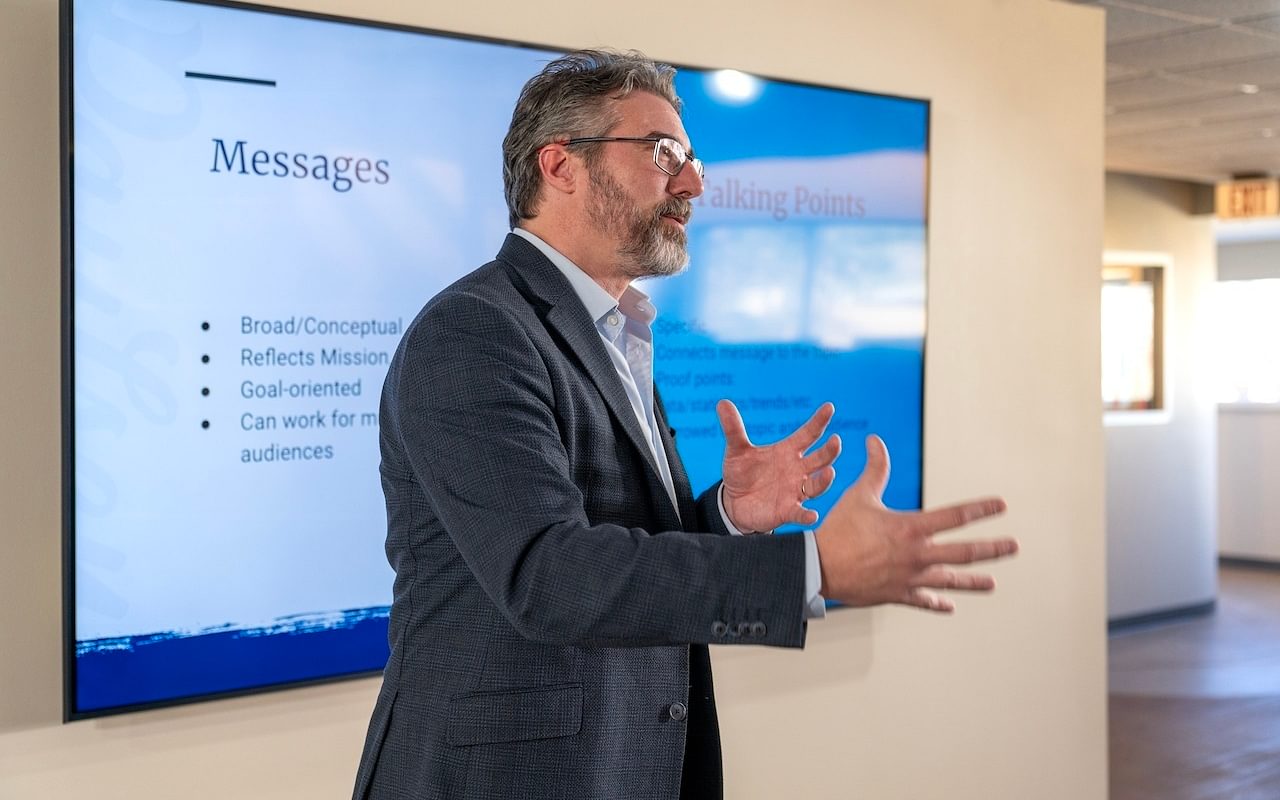Strengthening Communication Between G&T Boards And Local Co-Op Boards

This article was originally published at Forbes.com.
Electric cooperatives provide power for 42 million people across 48 states, yet many boards of directors operate in silos, missing key opportunities for alignment and growth. This is especially true in the relationship between generation and transmission (G&T) cooperative boards and local distribution cooperative boards—a dynamic that creates challenges in communication, decision making and strategic planning.
At the heart of this issue is a reality of governance: Local cooperative boards are composed of volunteers—farmers, small-business owners and community members—who have full-time careers outside of the energy sector. While they are deeply committed to their cooperatives, they may not always have the time or expertise to fully grasp the complexities of G&T decision making.
Without clear and consistent communication from the G&T level, these local boards may struggle to translate key initiatives and investments to their members, affecting trust and engagement. This disconnect leads to:
- Inconsistent messaging between the G&T level and the local level
- Lack of clarity on systemwide policies and investments
- Missed opportunities for collaboration on major industry changes
- Gaps in how strategic initiatives are communicated to member-owners
The result? Important decisions—on issues like rate adjustments, infrastructure investments and renewable energy integration—are not always understood at the local level, making it harder for local cooperative boards to make the right decisions for their members.
With the electric power and transmission industry undergoing major shifts, from increased demand and renewable integration to regulatory changes, the need for strong communication between G&T boards and local boards has never been greater.

Where Communication Breaks Down
One of the biggest pitfalls in the co-op governance model is the lack of unified messaging between the G&T and local co-ops. This creates:
- Confusion around rate structures and capital investments
- A weak response to regulatory challenges and policy changes
- Fragmented engagement with local lawmakers and regulators
- Inconsistency in how members perceive the value of their cooperative
For example, when a G&T cooperative invests in new infrastructure or expands renewable energy capacity, local boards must explain why those decisions were made and how they impact members. Without clear communication materials and strategic guidance from the G&T level, local boards are left to craft their own explanations—sometimes leading to misinformation, frustration and disengagement among members.
What G&T Boards Can Do To Improve Communication
To bridge the gap, G&T boards should take a proactive role in providing local cooperatives with the tools, training and messaging frameworks they need.
Prioritize Listening And Engagement
Strong communication starts with listening.
G&T boards must create regular, structured opportunities to hear directly from local boards about their concerns, challenges and informational needs. This should direct not only communication plans but also operational strategy. This could take the form of:
- Quarterly listening sessions with local board representatives
- Digital surveys to collect feedback on messaging effectiveness
- Regional roundtable discussions for sharing best practices
By making listening a two-way street, G&T boards can ensure their messaging is aligned with local board priorities.
Establish Thought Leadership And Advocacy Support
Many local cooperative boards operate in an awareness-only mode—they receive information about industry changes but lack the tools to effectively advocate for policies that benefit their co-ops and members. G&T boards should help move local boards from awareness to advocacy by:
- Providing regular policy updates and briefing documents
- Offering training on regulatory and legislative issues
- Equipping local boards with talking points and white papers/position papers to use in conversations with policymakers, the media or local business partners
A well-informed local board is a stronger advocate for the cooperative model.
Implement A Digital Asset Management System
A centralized digital asset platform can streamline how G&T cooperatives distribute messaging and creative materials to local co-ops. A self-service, one-stop shop for marketing and communication assets allows local boards and their communications staff to easily access:
- Pre-approved messaging and talking points
- Customizable social media graphics and print materials
- Educational videos and infographics explaining key issues
- Crisis communication playbooks for media engagement
Such a system ensures that all local co-op boards are working with a G&T board and are using the same set of facts and messaging. This reduces inconsistencies and strengthens the cooperative brand.
Offer Crisis Communication And Media Support
In times of crisis—whether it’s a major outage, rate change controversy or policy shift—local co-ops need clear, consistent messaging. G&T boards should provide:
- A media response playbook with key messages and FAQs
- Training on how to enact proactive public relations plans to manage public perception
- Templates for member-owner communications during crises
When co-ops speak with one voice, they maintain trust and credibility with their members.
Strengthening The Co-Op Model Through Better Communication
The strength of the electric cooperative system lies in its member-driven, community-focused structure. But that structure only works when communication flows effectively between G&T boards and local boards.
Key Takeaways For G&T Boards
- Listen first: Regularly engage with local boards to understand their needs and concerns.
- Provide leadership: Equip local boards with the tools to advocate for policies that benefit co-ops.
- Centralize messaging: Use a digital asset system to ensure consistency across all levels.
- Support crisis response: Develop playbooks and templates for effective public communication.
By taking these steps, G&T boards can foster stronger relationships with local cooperatives, improve strategic alignment and ultimately enhance member-owner engagement.
In an era of rapid industry change, clear, consistent and proactive communication isn’t just a best practice—it’s a necessity for the future of the cooperative model.
